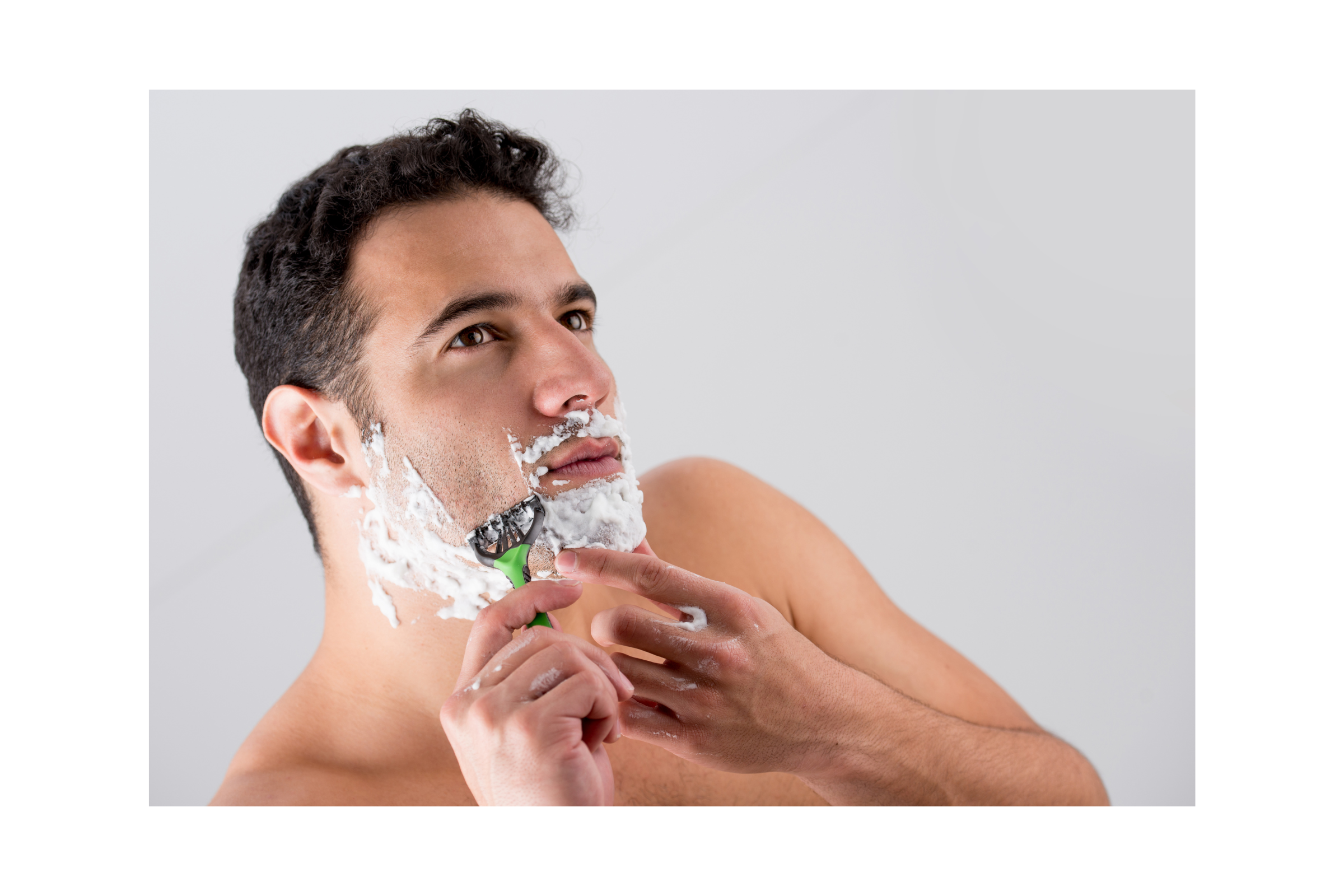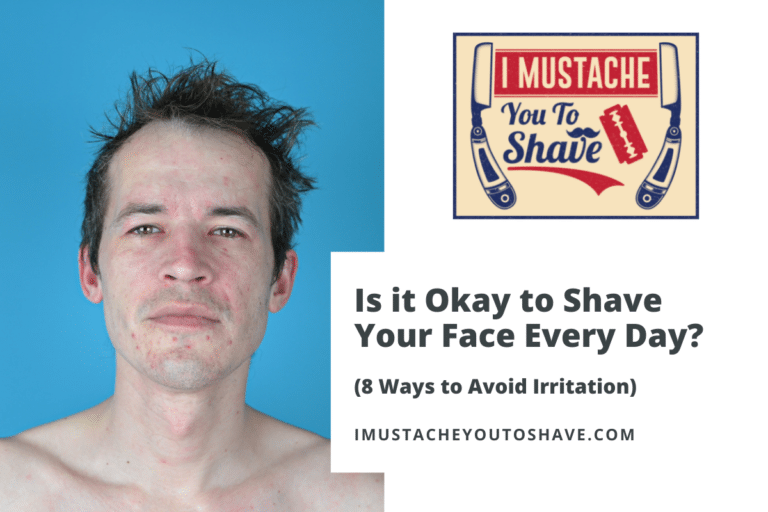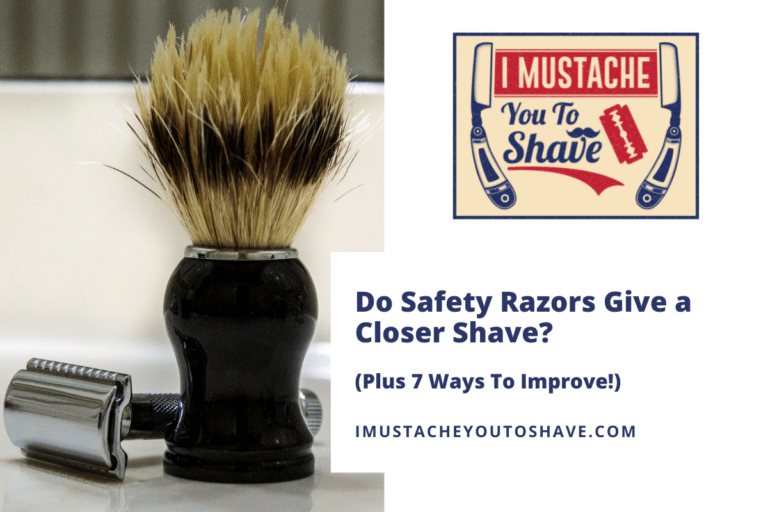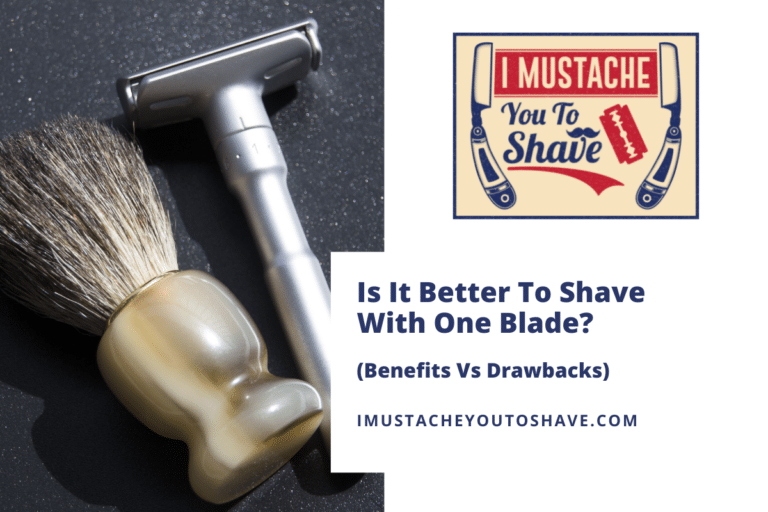Razor Tugging and Pulling? (Solutions for 4 Razor Types + Bonus Tips)
Shaving with the right tools can be a pleasant experience. When you feel your razor tugging and pulling, however, it’s time to make adjustments to either your razor, skin prep routine or shaving technique.
A razor will pull or tug your hair if the razor is dull or damaged, your razor isn’t tightened properly, you didn’t prepare your skin properly before the shave, or you are using poor technique during the shave. In most cases, replacing your razor blade with a fresh, sharp blade will reduce tugging and pulling during your shave.
For tips to avoid hair pulling with safety razors, cartridge razors, and straight razors, be sure to keep reading.
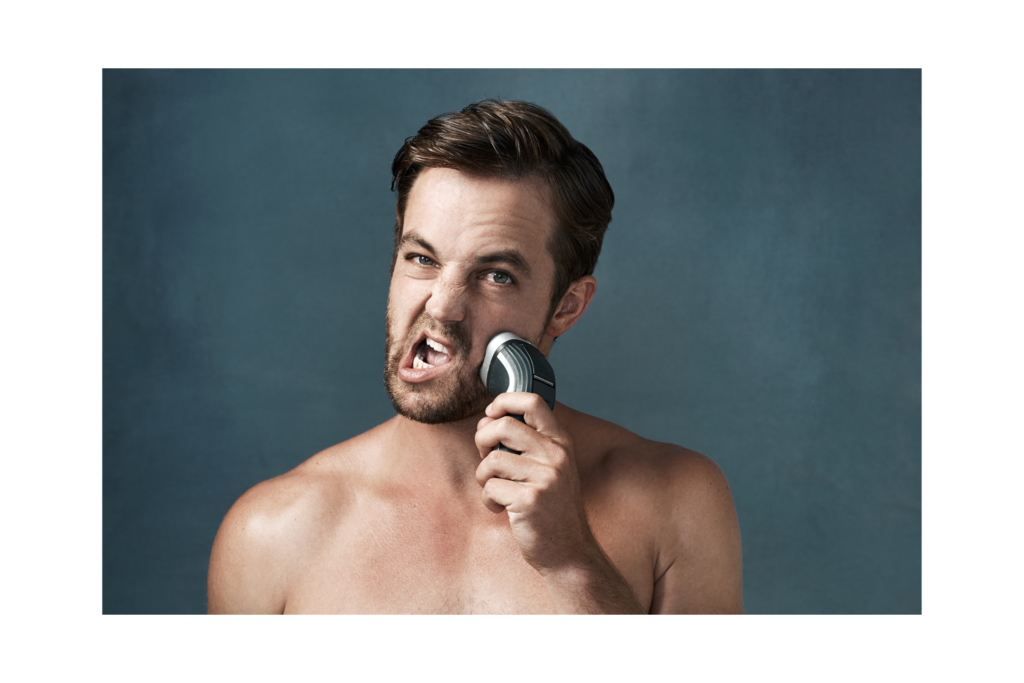
Why do razor blades pull hair as they shave
The most common reason why a razor blade pulls hair as it shaves is that the blade is damaged, dull, or clogged. Simply changing the blade or cartridge, cleaning it, or sharpening your straight razor can yield a more comfortable and smooth shave.
Dull blades are one of the most common reasons why a razor blade pulls hair. A dull blade has lost the razor’s edge that previously made it incredibly effective at cutting as close to the skin as possible.
Instead of a razor-thin edge, a curl in the metal – also known as a burr – can form. Alternatively, the edge can get blunted over time, rendering it less effective. As the edge is dulled, the hairs can get caught in microscopic nicks on the surface of the razor’s edge.
Damaged blades tend to pull on hair as they move across your face. Whether there is a small nick in the blade or the more severe issue of a burr forming on the razor’s edge, the blade essentially stops working as it should.
Instead of slicing the hair near the skin, the blade makes contact with the hair. From there, it doesn’t make a clean cut and instead grabs onto the hair. As you continue to move the razor across your face, the razor pulls these hairs instead of shearing them with the razor’s edge.
Dirty or clogged razors can also cause pulling and discomfort during your shaving routine. When soap and hair get caught in the razor, they begin to obscure the razor’s edge. As a result, the razor will stop cutting your hair properly and begin pulling it in certain spots.
Clogged razors are fairly common, but it is a bigger issue with cartridge razors. Because there are multiple blades, there’s more room for hair and soap to accumulate and get trapped. By using a quick rinse, you can fix this issue fairly quickly.
Why is my safety razor pulling my hair?
The biggest reason safety razors pull hair is that the safety razor blade is dull or damaged.
When the blade on a double-edge or single-edge safety razor is dull or damaged, it begins catching on the hair rather than cutting it in one motion.
Another reason safety razors pull hair is that the comb or safety bar gets clogged with debris. When shaving soap and hair begins to form in front of the razor’s edge, it reduces the efficiency of the blade and leads to pulling, snagging, and irritation.

Tips to avoid hair pulling with safety razors
One of the easiest ways you can avoid hair pulling with safety razors is to use a new safety razor blade.
Just take the blade out of your razor, dispose of it safely in a blade bank, and place a new safety razor blade in your safety razor.
If you are looking to avoid using a new razor blade, you can try stropping the safety razor blade. This can be done by gently running the blade across your palm, leading with the non-cutting edge. If you’re worried about cutting yourself, you can also use jeans. By stropping a double- or single-edge safety razor blade like this, you remove some of the knicks and imperfections on the razor’s edge.
Why is my cartridge razor pulling my hair?
Cartridge razors typically feature multiple blades that are designed to create a closer shave with less irritation, but they also tend to be a bit more high maintenance than more traditional styles of razors.
Cartridge razors typically pull hair because of three reasons:
- The blades are dull
- The blades are clogged
- Your facial hair is too long to shave with a cartridge razor
Dull blades in a cartridge razor can lead to hair pulling. Similar to what happens with a safety razor, cartridge razor blades can get dull or damaged over time. The imperfections in the blade can start to pull on individual hairs, leading to irritation.
Hair pulling can also occur in your cartridge razor when the cartridge is clogged with debris. During the shaving process, hair and soap can build up in between the blades of a cartridge razor. When this happens, the razor’s edge is blocked. As a result, the razor begins to pull and irritate your skin.
If your facial hair is too long, this can also lead to tugging and pulling sensations. If your facial hair is too long, the multiple blades in the cartridge may not be able to pull the hair taut enough to cut it. Typically, the first blade on a cartridge razor makes contact with a hair to pull it taut, while the other blades shear it. If your facial hair is too long, the other blades may just tug and pull on the hair instead of cutting it like it is supposed to.
Tips to avoid hair pulling with cartridge razors
There are many ways to avoid hair pulling with cartridge razors.
One of the easiest, but perhaps most expensive fixes is to change your cartridge. With a new cartridge, you should have sharper, damage-free razor blades cutting your hair.
Just be sure to keep the razor clean and rinse it in water in between passes to limit any debris blocking the razor.
If you are trying to shave long facial hair, you may want to start with scissors or shears to take off the bulk of the hair. This allows the hair to stand straight up, making it easy for the cartridge razor to lop off the hair, and offers you a clean shave.
Why is my electric razor pulling my hair?
Electric razors can pull hair for a variety of reasons. One of the top reasons is that the electric shaver is dirty and needs some maintenance and TLC.
When electric razors are dirty, the moving parts can become clogged with skin, hair trimmings, oil, and soap.
When this happens, the blades don’t perform like they are supposed to and don’t trim the hair properly. If the electric razor is especially dirty, it’ll stop clipping your hair altogether and just cause an uncomfortable tugging sensation on your beard.
Tips to avoid hair pulling with electric razors
To avoid hair pulling and tugging with an electric razor, try cleaning the electric razor with warm water and a little hand soap. Before you do this, though, be sure to check the manufacturer’s directions.
Depending on your electric razor, you may also need to apply a light lubricating oil, like clipper oil, to the razor’s moving parts. Consult the razor user’s manual for directions on lubricating your razor.
Another tip to avoid hair tugging and pulling is to make sure your beard is at a reasonable length. If your hair is too long, the trimmer might cut parts of your facial hair rather than cutting it close to your face.
Why is my straight razor pulling my hair?
If a straight razor is pulling your hair, the most likely culprit is a dull or damaged razor.
There are many options for reducing the amount of irritation and hair-pulling with a straight razor.
Tips to avoid hair pulling with straight razors
Make sure that you are stropping your razor blade before your shave.
Pro stropping technique involves:
- Keeping the blade level with the strop so the edge and spine are parallel to the strop.
- Keeping the spine of the straight razor on the stop at all times.
- Pushing the blade edge away from you, flipping it so it faces the top of the strop, and bringing it back towards you.
- Ensuring the strop remains taut the entire time.
Additionally, if your straight razor needs to be sharpened, you might want to send it to a professional knife sharpener to ensure a high-quality edge is placed back on your straight razor.
Otherwise, you may have to purchase sharpening stones to sharpen your razor – and you may not achieve the sharpness that is required for a good shave.
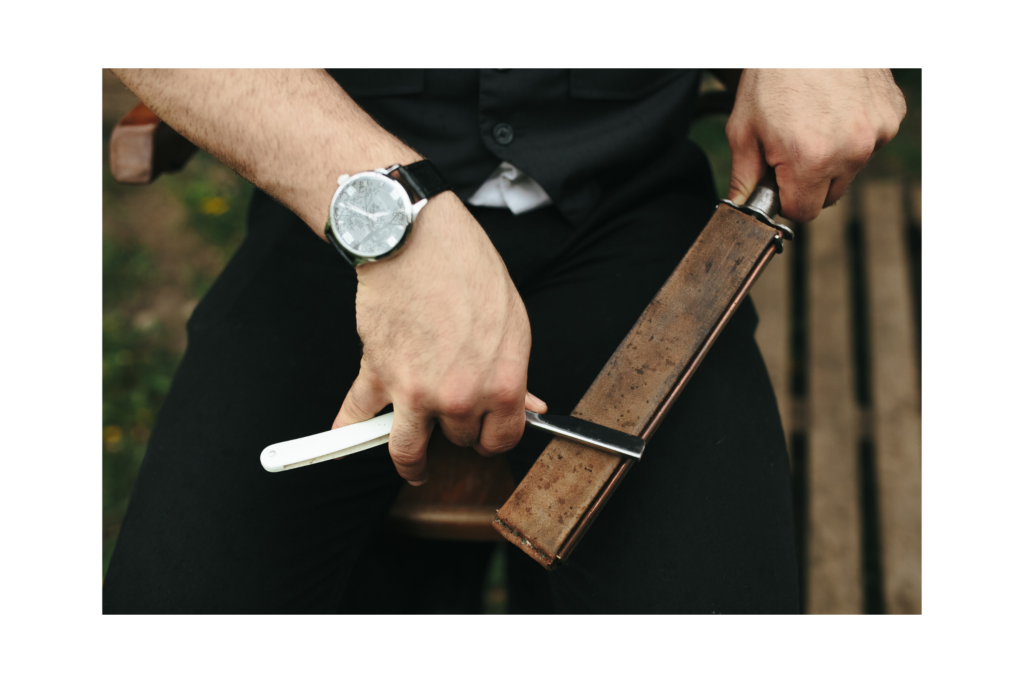
Proper skin preparation
While a dull, dirty, or clogged razor may be the reason for painful tugging and pulling, skipping skin prep before a shave can also cause pain and irritation.
If using a safety, cartridge, wet electric, or straight razor, use warm water to open pores and shaving cream to lubricate skin and soften facial hair. If using a dry electric razor, start with a clean, dry face and apply a pre-shave lotion or powder to help the hair stand up for easy cutting.
Wet shaving requires warm water, shaving cream, and a sharp blade to improve the glide of the razor along the skin. Preparing your skin properly before the shave will cut down on tugging, pulling, and skin irritation.
Dry shaving with an electric razor also calls for skin prep. A pre-shave lotion or powder will absorb wetness and oil, so the dry razor can do its job. These products also lodge under the hair, causing them to stand up, ensuring a close shave.
Proper shaving technique
Believe it or not, there is a right and wrong way to shave.
To prevent tugging and pulling while shaving, use short, light strokes, rinse your razor between strokes, and shave in the direction of hair growth.
Short shaving strokes are better than long strokes because they result in less tugging on the hair. Make sure to rinse the razor periodically to avoid clogged blades that can also cause pulling and tugging. Moving in the direction of your facial hair growth will lessen stress on the hair and reduce nicks and ingrown hair.
Summary of ways to prevent razor tugging and pulling
Whether you are using a safety, cartridge, electric, or straight razor, sharp blades are essential to prevent tugging and pulling while shaving. Straight razor blades can be sharpened, and other razor types can be replaced periodically to ensure a close, easy shave. Proper skin prep before a shave and using the correct shaving technique will also cut down on an uncomfortable tugging and pulling sensation.
FAQs about razors pulling or tugging
How do you prevent tugging when shaving?
The best way to prevent tugging while shaving is to always use a sharp, clean blade. Preparing skin with warm water and a creamy, slick shaving cream will help the blade glide instead of dragging across your face. Always use short, light strokes, and shave in the direction of hair growth.
Should you pull the skin taut when shaving?
You can pull the skin taught when shaving to get a closer shave. However, avoid pulling it so tight that the hair retracts too far under the skin when released, as this can result in ingrown hairs.
What are the cons of sharing a razor?
Sharing razors should be avoided. Bacteria can spread between users resulting in red, itchy bumps and rashes. They can become infected and need medical treatment.

